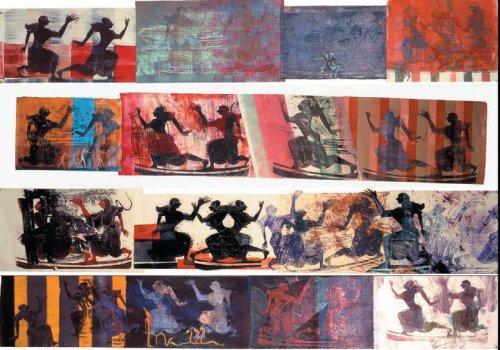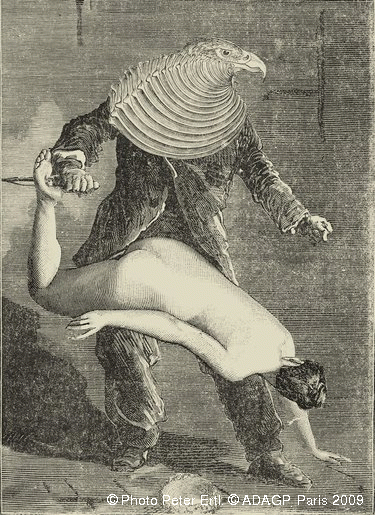1. On an 8.5 x 11" paper, draw an object in any media you'd like.
2. Take this drawing and photocopy it.
3. Take this photocopy and draw on top of it. You can use white-out, paint, collage, charcoal, ink, whatever.
4. Take this drawing and photocopy it. There are also features such as contrast and zoom on the copymachine to utilize.
5. Repeat this process until you have 10 drawings that are part photocopied, part drawing.
Throughout this process- begin thinking about the idea of time and transformation in the drawings that you are making. There will be a literal sense of this happening through the process, with evidence of the last drawing in the latest one- but also maybe the images you select to draw reflect this process. Is there a story, will there be a flipbook/animated quality to your series? Or, maybe you will you just begin the process and let the imagery come to you as you work?
I don't have any student examples, but take a look at Jenna Weiss's show at Grizzly Grizzly from a few months ago. She used this same process to create a series of abstract mixed media works.
*Note: For our class, you should start with a representational drawing, and mainly keep it representational as this is an observational drawing course. However, abstract elements and compositional strategies can be added, and your objects/figures that you draw can become abstracted through the process.

http://theartblog.org/blog/wp-content/uploaded/Jennaweissandxeroxes.jpg
After you have completed 10 drawings, take your favorite and blow it up to 22 x 30" or bigger (it will be more fun to work even larger). You can do this using the oversized black and white printer at Kinkos or Staples. Take this larger copy and rework that as well.








































